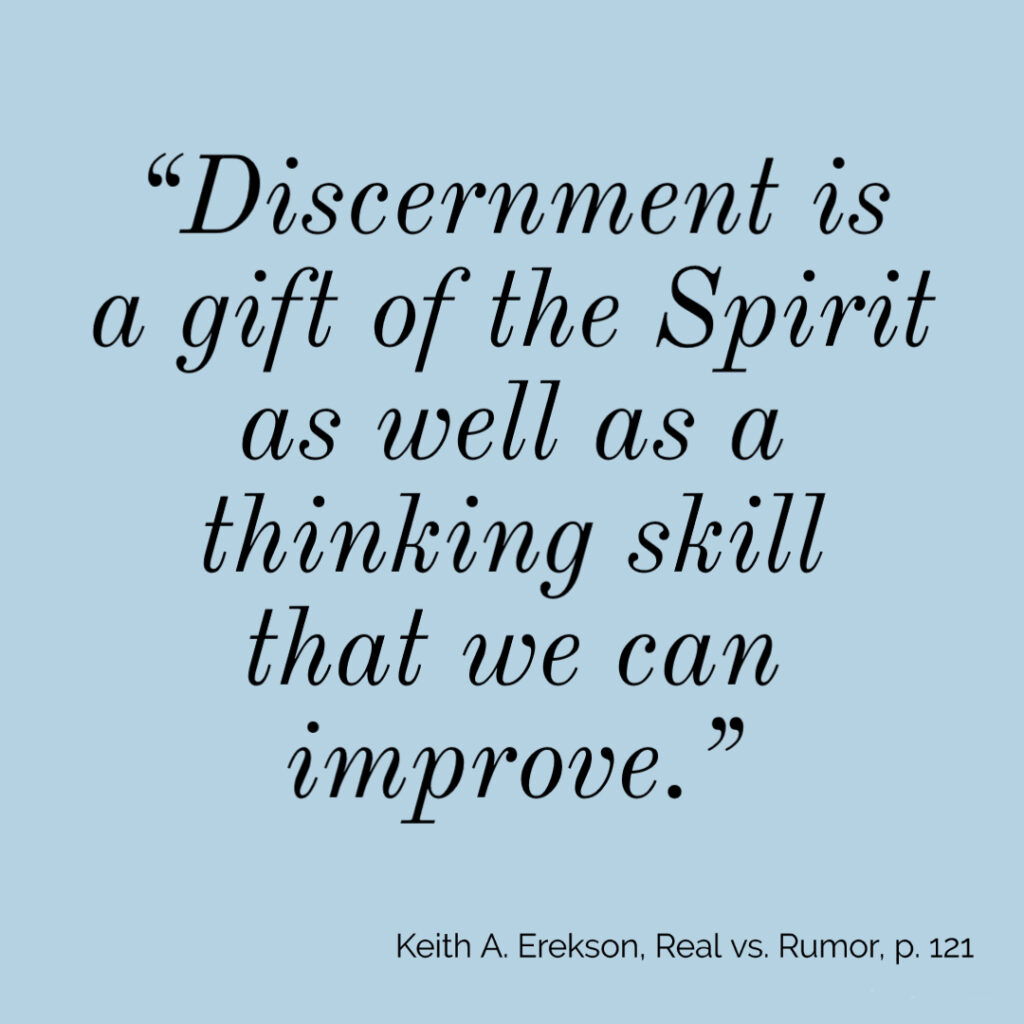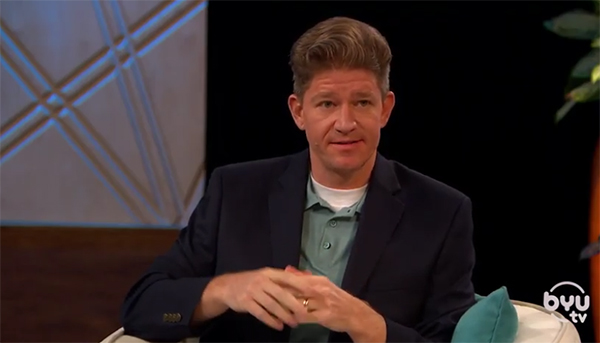Episode Summary: Did Joseph Smith really say that? Does the Church have the sword of Laban? How accurate was the story told in Sunday School? Should I trust the information I found online? Can I draw closer to God by learning about history? Real vs. Rumor explores Latter-day myths, rumors, and Church history to demonstrate how to think critically about the information that swirls around us. Each chapter brims with illuminating examples from scripture, history, and popular culture. By thoughtfully combining study and faith to investigate myths and rumors, you will deepen your discipleship, avoid deception, understand tough topics, and see the hand of God in history and in your own life.
Listen to Episode 516: Keith Erekson (May 7, 2021).
Every year, the quote resurfaces on Mother’s Day cards. Abraham Lincoln said, “All that I am, or hope to be, I owe to my angel mother.” The sentiment stirs hearts — and sells cards — because people assume they share with Abraham the exact same love for mothers. But, to paraphrase a fictional Spanish philosopher-swordsman, “Lincoln’s words did not mean what you think they mean.”
We begin first with the evidence. As it turns out, the greeting card tagline is merged from two sources. Two years after Lincoln’s death, his longtime law partner William Herndon told an interviewer that Abraham said, “all I am or can be I owe to my angel-mother.” Twenty-two years later, in his own memoir, Herndon presented a slightly more polished version: “God bless my mother; all that I am or ever hope to be I owe to her.” So the greeting card companies dropped the blessing from the later version and appended the earlier “angel mother” description. We can reasonably say that Lincoln expressed something like this sentiment in probably as many words.
To discern what Lincoln meant by these words we must put them back into context. Herndon explained that the two of them were traveling in Lincoln’s one-horse buggy around 1850 on the way to the court in Menard County, Illinois, where they would argue a case that involved the question of hereditary traits. Though they had known each other for more than a decade and had been law partners for six years, Herndon recalled that this was “the first time” Lincoln ever spoke of his mother Nancy Hanks and the only time he spoke of his ancestry. Lincoln reported that his mother’s mother Lucy was the illegitimate child of a Kentucky woman and a “well-bred Virginia farmer.” The Hankses were poor and uneducated, so Lincoln attributed to his unknown planter great-grandfather “his power of analysis, his logic, his mental activity, his ambition, and all the qualities that distinguished him from other members and descendants of the Hanks family.” Thus, despite thinking he descended from an embarrassing extramarital relationship and growing up in frontier poverty, Lincoln’s hope for his own success rested on the traits inherited through his mother’s mother. The message that “your family is embarrassing but useful” is probably not what you meant to express to your mom.
The only direct reference Abraham ever made to his mother came in a letter to a friend after a woman he was courting terminated their relationship. He felt rejected and bitter, prompting caustic commentary on the woman’s weight, age and appearance. “When I beheld her, I could not for my life avoid thinking of my mother,” he said, “from her want of teeth, weather-beaten appearance in general.” Greeting card companies will likely never adopt this firsthand statement from Lincoln!
Why would Abraham write this? Nancy Hanks Lincoln was poor, illiterate and died when he was 9 years old. His last view of her came on her deathbed, after she contracted a frontier disease called “the trembles” or “sick stomach” or the “puking illness.” Victims experienced weakness, fatigue, vomiting, abdominal pain, severe constipation and offensive breath before passing into a coma and dying. This profound childhood trauma was followed by his father’s quick remarriage, so the term “angel mother” may have been a polite euphemism for “dead mother” to differentiate from his still living stepmother. Herndon reported that Lincoln made the statement about his mother “ruefully,” before he “immediately lapsed into silence” and they “rode on for some time without exchanging a word. He was sad and absorbed.”
This Mother’s Day, let’s liberate moms from harmful cultural expectations about angelic perfection. We can question assumptions, ask for evidence and seek to understand things in proper contexts. We can embrace family experiences as they really are — imperfect, embarrassing, useful and traumatic — because they really do make us into people, like Lincoln, who can make a difference in the world. What more could we ever hope for?
This op-ed was originally published in the Deseret News on May 7, 2021.
Episode Summary: We’ve all heard them. There are pre-general conference predictions, rumors about certain celebrities investigating the Church, and sensationalized stories from Church history. How can you discern what is real and what’s rumor? On this week’s episode, Keith Erekson, director of the Church History Library, teaches how historians approach corroboration and how you can do the same in your own life.
- Listen to Episode 129: Investigating Latter-Day Saint Rumors and Assumptions (May 5, 2021).
- Read the full transcript.
- Read an excerpt on LDS Living (May 8, 2021).

Discernment a Gift and a Skill (pp. 120-121)
Because we live in a world awash with rumors, myths, hoaxes, misinformation, and lies, we must learn to investigate what we encounter. We must learn to discern, as President Russell M. Nelson taught, “between schemes that are flashy and fleeting and those refinements that are uplifting and enduring.” Elder David A. Bednar explained that discernment “helps us to distinguish the relevant from the irrelevant, the important from the unimportant, and the necessary from that which is merely nice.” The Holy Ghost helps us discern truth and error, as well as things that are cunningly crafted or just silly. Discernment is a gift of the Spirit as well as a thinking skill that we can improve. Through practice and inspiration, we can develop a discerning eye, an analytical mind, and good judgment.
Real vs. Rumor is not structured around the “Come, Follow Me” curriculum, but it is filled with insights that will improve your scripture study, thinking, and discipleship. The reading for May 3-9 examines Doctrine and Covenants 46-48 and explains that many early Saints “found it hard to discern which manifestations were of the Spirit and which were not.” This passage comes from chapter 9, which opens section 2 of the book and introduces a process for investigating what is real and what is rumor.
From “Introduction. Our Day of Rumors” (pp. 1-2)
The rumors shot through the crowd like lightning. Murder! Enemy infiltration! The tyrant got what he deserved! Each newcomer gaped in horror at the motionless bodies scattered on the ground—the king, the queen, their servants, and also . . . the foe. Nasty outsider! Evil specter! More like a monster! Speculation mounted into sharp contention as a woman arrived. Everything was wrong! She had seen what really happened; it was she who had run excitedly to call the crowd. Knowing she could only quash the rumors with something real, Abish reached out and took the queen by the hand (see Alma 19:17–29).
We, too, live in a day when rumors and myths mingle with reality and cause confusion, concern, and contention. To survive, we must find and grab hold of the real from amid the rumor, but frequently the two are closely entangled. Forgers write fake words on actual historical paper; con artists couch a long lie in many short truths; spokespeople offer finely parsed words that sound like a lot but commit only a little. Today rumors appear as errors, falsehoods, legends, family lore, false quotes, lies, misleading misinformation, and deliberately distorted disinformation. Sometimes the word myth is used to describe simple errors that stand in opposition to facts. But a myth can also be a sweeping cultural story that lives deep in our minds and underlies our actions. Surrounded as we are by myths and rumors, the best protection lies not in memorizing every possible fact or in debunking simple errors but rather in knowing how good thinking works. Just as Adam and Eve needed to “taste the bitter, that they may know to prize the good” (Moses 6:55), so can we dissolve rumors by recognizing what is real.
Real vs. Rumor is not structured around the “Come, Follow Me” curriculum, but it is filled with insights that will improve your scripture study, thinking, and discipleship. The reading for April 26-May 2 examines Doctrine and Covenants 45 and explains “We live in perilous times, and that can be troubling. Even Jesus’s disciples, when they heard Him prophesy of the calamities that would occur in our day, ‘were troubled.’ The early Saints in Kirtland, Ohio, were also troubled by the perilous times in which they lived. Among other things, there were ‘many false reports … and foolish stories’ that were undermining the gospel message. But the Lord’s response, then and now, is ‘be not troubled.’” The first two paragraphs from Real vs. Rumor show how to put this message into practice.
Today it was my pleasure to join Barbara Morgan Gardner and Daniel Becerra on BYUtv’s Come Follow Up to talk about Doctrine & Covenants 27-28. We discussed the sacrament, putting on the armor of God, and how to have an eye single to the glory of God.
In the segment about the armor of God, I made a passing reference to a passage in my forthcoming book, Real vs. Rumor. Here is a little more:
The authors of antagonistic materials hope people will abandon their faith and leave the Church. Antagonists are also generally pleased when defenders try to respond to every criticism raised. Beyond departure or rebuttal, I prefer a third approach, drawn from the Book of Mormon. When thieves scattered King Lamoni’s flock, Ammon did not join them, nor did he attempt to engage each bandit in a series of gentlemanly duels. No–he just cut off their arms (see Alma 17:35–37). By extension, we need not read and respond to every online criticism; once we perceive the author’s intent and distortions, we can simply close the browser. Other scriptures teach that our faith can “quench . . . the fiery darts” (Eph. 6:16) of the adversary. The critics’ darts don’t find a target, nor are they dodged; they are simply extinguished.
Real vs. Rumor: How to Dispel Latter-day Myths (Deseret Book, 2021), 161.
Here’s the segment on “An Eye Single to His Glory”
Watch the full episode online.
Episode Info: “Things Must be Done in Order.” Keith Erekson, director of the Church History Library, joins the moderators and studio audience to discuss several topics from the Doctrine and Covenants. They talk about how “things must be done in order,” putting on the armor of God, and keeping an eye single to His glory. The panel discusses how the armor of God can be used both on the defensive and the offensive to combat the adversary.
Tags
Access Policy Analogies Angel Moroni Archives & libraries Awards Black history Bridging the Gap Careers in History Church History Library Church History Speaking Come Follow Me Commemoration Conspiracy Theories Contingent Citizens Databases Elvis Presley Forgery Everybody's History Family History & Genealogy First Vision Foundations of Faith Genealogy Speaking History Skills History teaching & learning Hoaxes and History 2019 How History Works In the Church News Lincoln Making Sense of Your Patriarchal Blessing Missionaries Mormon studies Mormon Women's History Mother's Day Patriarchal Blessings Pioneers Politics Primary sources RealvsRumor Saints Saints (narrative history) Sensible History Stories survey course Texas social studies UTEP Centennial WitnessesDisclaimer
The views expressed here are the opinions of Keith A. Erekson and do not necessarily reflect the views of the Church History Department or The Church of Jesus Christ of Latter-day Saints.





